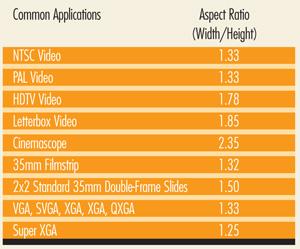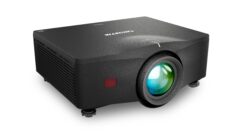

Selecting the Right Projection Screen
1. Determine the optimum screen size. The rule of thumb is to fit the screen to the audience – not to the projector. Factors include room dimensions, planned audience seating size, and arrangement. Use the following suggestions for determining screen size:
- Screen height should be approximately one-sixth the distance from the screen to the last row of seats. Ideally, the first row of seats should be approximately two screen heights away.
- The bottom of the screen should be a minimum of 4 feet above the audience floor, allowing those seated farthest away to see the screen. This may require additional screen “drop” for ceiling-hung screens.
2. Select the appropriate format for your projection application.
3. Choose the screen surface that best suits projection and viewing requirements. If the screen will be used for multiple projection methods, choose the screen surface that meets the requirements of the lesser performing projection method. Listed are some common front projection screen types and applications; however, it’s best to check with the screen manufacturer for specific recommendations based on its available options.
FRONT PROJECTION
Matte White: Best used when ambient light is controllable.
High Contrast Matte White: For moderate output DLP and LCD projectors, where ambient light is moderately controlled.
Silver Matte: For a polarized 3D projection.
4. Pick the type of screen that best suits your particular needs. Choices include front projection screens in portable-, wall-, or ceiling-mounted models in either manual or electric versions; or rear projection screens. Generally, if your projection application is permanent, then wall and ceiling screens are your best choice. If, however, you find your needs require moving the screen to different locations, then a portable screen is optimal.










